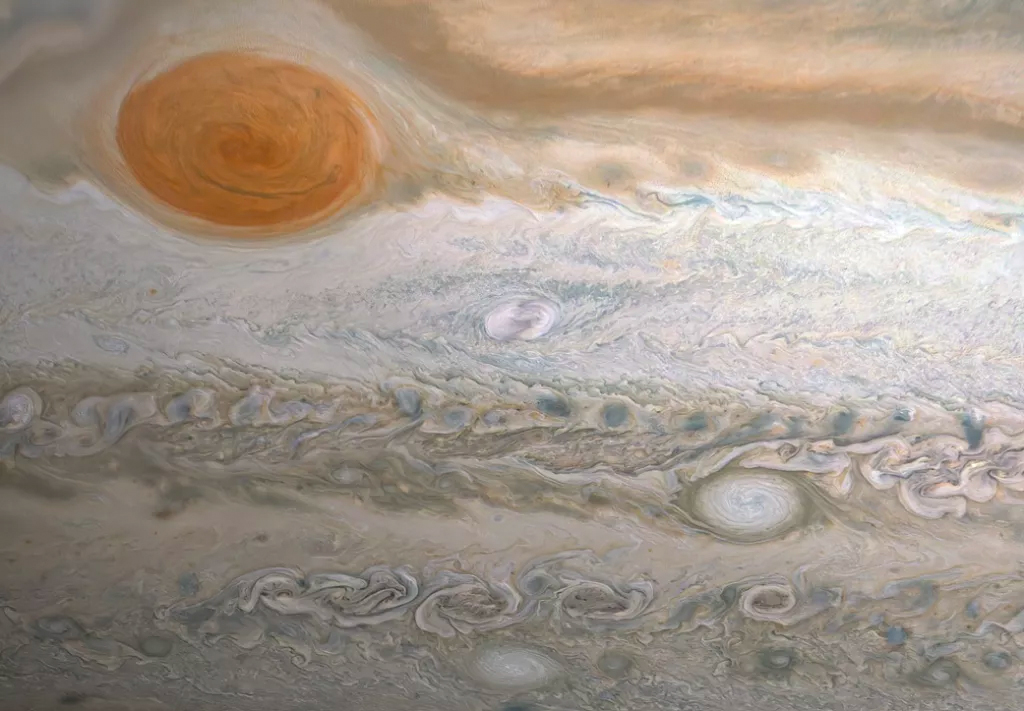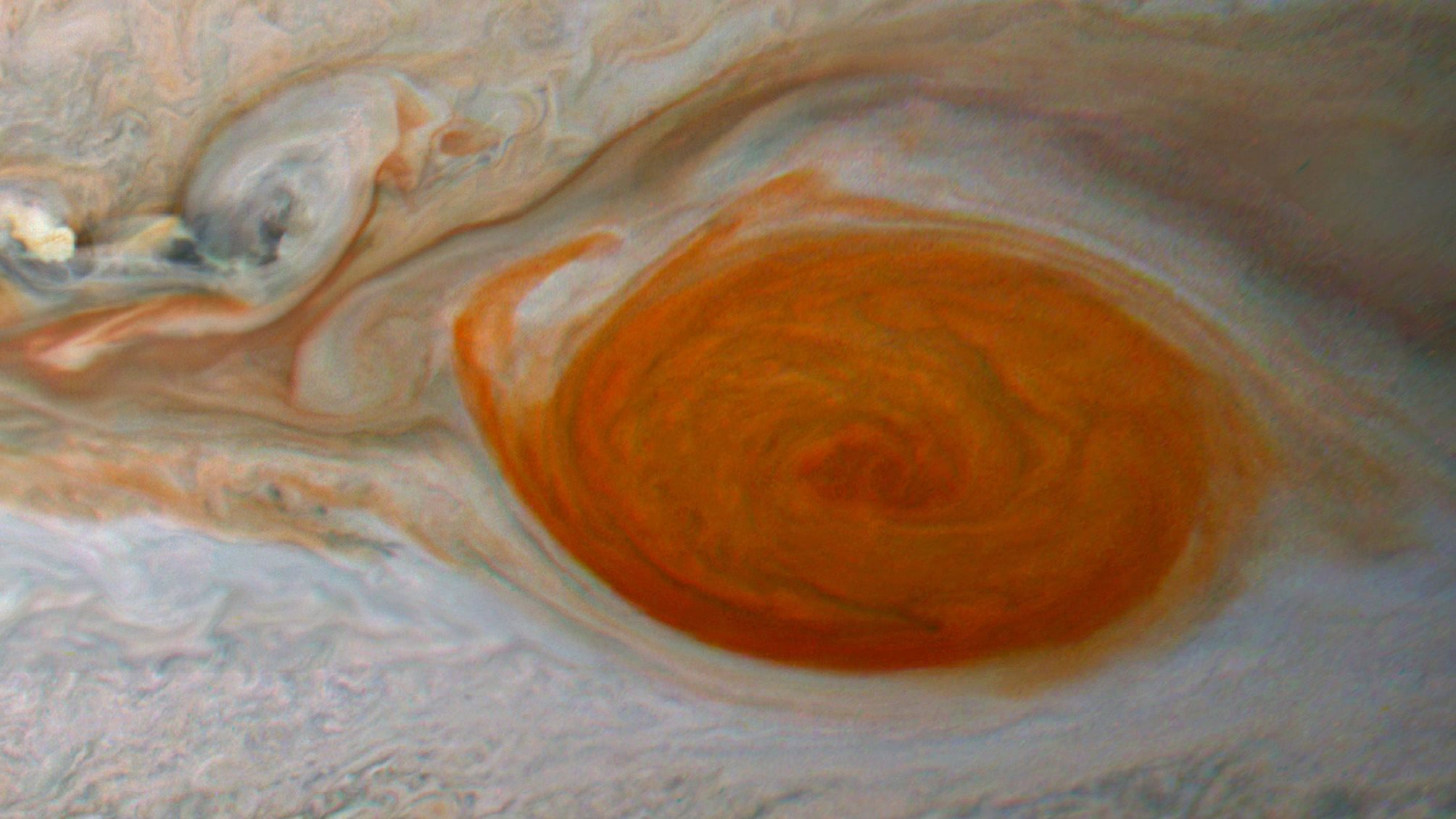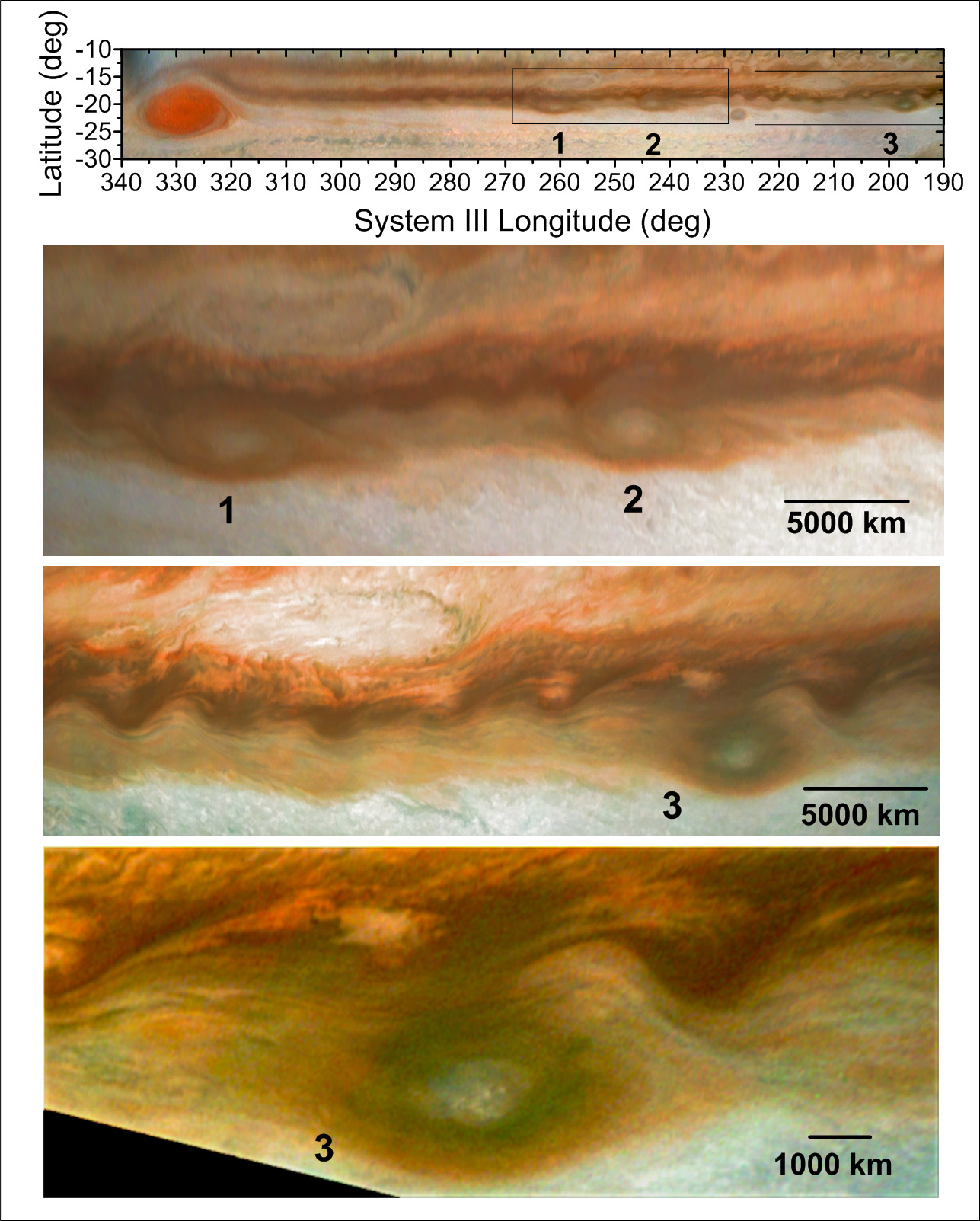Jupiter's Great Red Spot is a ruthless cannibal that devours smaller storms

What's the secret to a long life? For the Great Red Spot, a massive storm that has churned on Jupiter's surface for at least 150 years, the answer may be cannibalism.
The Great Red Spot (GRS) is about twice as wide as Earth. But over time, it's been gradually shrinking, and the storm is currently half the size it was at the end of the 19th century. So when a string of smaller atmospheric storms collided with the GRS in recent years and caused bits of the bigger storm to "flake" off, scientists feared that the long-lived and iconic GRS might be torn to pieces.
Instead, the GRS slurped up its smaller cyclone siblings and was none the worse for wear. And much like the energy drinks consumed by human athletes, small storms may provide a much-needed boost to the GRS, ensuring that it keeps spinning for years to come.
Related: Jupiter's Great Red Spot: a monster storm in pictures
Regular observation of the Great Red Spot began in 1850, but modern astronomers argue about who logged the first recorded sighting of the mighty storm. Some claim the honor belongs to Italian astronomer Giovanni Cassini, who described the storm in 1665, while others insist that the English scientist Robert Hooke did so one year earlier, according to the American Physical Society (APS).
The storm lies near Jupiter's equator in the southern hemisphere, and it rotates counterclockwise. Much like the hurricanes that form on Earth, the eye of the storm is relatively quiet. But winds that are farther from the center can reach speeds up to 425 mph (680 km/h), NASA says.
No one knows what lends the GRS its distinctive red color, or what spawned the enormous storm centuries ago. However, it may have lived so long because Jupiter lacks a solid surface under 44 miles (70 kilometers) of cloud layers. Land formations on Earth slow and dispel powerful hurricanes, so it's possible that the GRS rages on because there's no landmass below to stop it, Live Science's sister site Space.com reported.
Sign up for the Live Science daily newsletter now
Get the world’s most fascinating discoveries delivered straight to your inbox.
But whatever fueled the storm's birth and growth may be slowly fading away. In 1879, the GRS measured approximately 24,850 miles (40,000 kilometers) wide; since then, it shrank to about 9,320 miles (15,000 km).
To learn more about the GRS and other Jupiter mysteries, NASA launched the Juno mission in 2011. With its arrival at Jupiter on July 4, 2016, Juno became an orbiting eye in the sky for peering through the gas giant's dense cloud cover and capturing close-up images of the GRS and other phenomena, such as a hypnotizing vortex cluster at Jupiter's north pole.

A threat from the east
Between 2018 and 2020, when the GRS was smaller than it had been in 150 years of observations, it was bombarded from the east by dozens of anticyclones — storms that have high-pressure centers and spin counterclockwise — that ripped large red swaths from the spot's main body. Small vortices had slammed into the GRS before, but never so many in such a short time span, scientists wrote in a new study.
"Its structure and even its survival appeared to be threatened," researchers reported March 17 in the Journal of Geophysical Research: Planets.
For their study, they investigated the impact of these smaller storms on the GRS. They measured and mapped cloud features in images of the GRS, captured by the Juno spacecraft's JunoCam; by the Hubble Space Telescope; by the Calar Alto Observatory in Almería, Spain; and by amateur astronomers using ground telescopes, according to the study.
Though the GRS dwarfs these anticyclones, no they were still quite large, measuring about 10 times the size of hurricanes on Earth. As they drew closer to the GRS, they peeled away strips from the central part of the storm, creating red "streamers" that extended from the giant spot. The collisions also distorted the big storm's overall shape, lead study author Agustín Sánchez-Lavega, a professor of applied physics at the Basque Country University in Bilbao, Spain, said in a statement.

"All this significantly disrupted the red oval area of the GRS, and was even suspected of putting its long life at risk," the study authors reported.
However, the damage was superficial. The GRS extends to a depth of about 125 miles (200 km). Changes in structures and reflectivity in the GRS and the flakes of red, and simulations of the collisions revealed that the ripped streamers were just a few kilometers deep, "not affecting the full depth of the GRS," according to the study. "By October 2019, the visible red oval had almost recovered to its previous size."
What's more, the velocity of the Giant Red Spot's internal rotation increased after its "ingestion" of the smaller storms, suggesting that it was absorbing their energy, the researchers wrote.
Colliding with the anticyclones didn't drain the GRS's strength or nudge it closer to destruction. Rather, it demonstrated that a cannibal diet "can increase the GRS rotation speed, and perhaps over a longer period, maintain it in a steady state," Sánchez-Lavega said.
Originally published on Live Science.

Mindy Weisberger is an editor at Scholastic and a former Live Science channel editor and senior writer. She has reported on general science, covering climate change, paleontology, biology and space. Mindy studied film at Columbia University; prior to Live Science she produced, wrote and directed media for the American Museum of Natural History in New York City. Her videos about dinosaurs, astrophysics, biodiversity and evolution appear in museums and science centers worldwide, earning awards such as the CINE Golden Eagle and the Communicator Award of Excellence. Her writing has also appeared in Scientific American, The Washington Post and How It Works Magazine. Her book "Rise of the Zombie Bugs: The Surprising Science of Parasitic Mind Control" will be published in spring 2025 by Johns Hopkins University Press.










